Electric Shock Most of you will have experienced
When an electric current passes through a material, resistance to that current flow results in a 'dissipation of energy', usually in the form of heat. So, a current makes living tissue heat up. If the amount of heat generated is sufficient, the tissue may be burnt. However, the burn is slightly different from that from a naked flame as electricity has the ability to burn tissue well beneath the skin of a victim, even burning internal organs. Shock-induced tetanus ('frozen' muscles)
The nerve cells communicate and operate via electrical signals made up of very tiny voltages and currents. When you get a 'shock' a big enough electric current passes through you to override the tiny electrical impulses normally generated by the neurons. Basically the 'shock' overloads the nervous system and prevents both automatic (reflex) and decided up (volitional) signals from being able to operate muscles. Muscles triggered by an external (shock) current will involuntarily contract and stay that way - there's nothing you can do about it! That means you cannot 'let go' of the object that caused you to have the shock - some people say you 'stick to it' - but in reality your muscles are unable to move - unable to let you release it. To move you away someone has to switch off the power first - reduce the external current through you to zero. Electric shock can be fatal Death from asphyxiation and/or cardiac arrest cab result from a strong enough electric current through the body. Even electric currents too low to 'freeze' skeletal muscles can have a devastating effect on he diaphragm muscle controlling the lungs or the heart (which is a muscle in itself). They can scramble nerve cell signals enough to send the heart into a condition known as fibrillation. A fibrillating heart flutters rather than beats, and is ineffective at pumping blood to vital organs in the body. image from: http://iopscience.iop.org
AC/DC
Low-frequency (50- to 60-Hz) AC is used in US (60 Hz) and European (50 Hz) households - the reason for its use is not to make it dangerous for us - there are many reasons why it is used that need not be discussed here. It can be more dangerous than high-frequency AC and is 3 to 5 times more dangerous than DC of the same voltage and current. Low-frequency AC produces extended muscle contraction (tetany), which may freeze the hand to the current's source, prolonging exposure. DC is most likely to cause a single convulsive contraction, which often forces the victim away from the current's source.
|
Follow me...
|


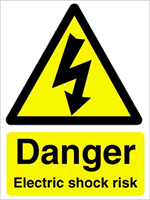 some form of electric "shock" - tingles or jolts of pain from static electricity buildup discharging through our bodies but few of you will have (hopefully) had a shock from an electric circuit or a massive static discharge. Shocks from these can be much more serious and can cause permanent damage or even death.
some form of electric "shock" - tingles or jolts of pain from static electricity buildup discharging through our bodies but few of you will have (hopefully) had a shock from an electric circuit or a massive static discharge. Shocks from these can be much more serious and can cause permanent damage or even death. Electric Burns
Electric Burns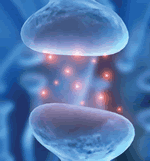 Your nervous system is the network of special cells in your body called "nerve cells" or "neurons" which process and conduct the multitude of signals responsible for organising and activating many body functions. Your brain,spinal cord, and sensory/motor organs all work together to allow you to sense, move, respond, think, and remember.
Your nervous system is the network of special cells in your body called "nerve cells" or "neurons" which process and conduct the multitude of signals responsible for organising and activating many body functions. Your brain,spinal cord, and sensory/motor organs all work together to allow you to sense, move, respond, think, and remember.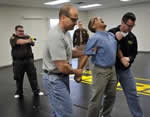 Even when the current is stopped, you may not regain voluntary control over your muscles for quite a while - your nervous system needs time to 'reset'. This has been used in 'stun gun'" devices such as Tasers, which momentarily shock a victim with a high-voltage pulse delivered between two electrodes - immobilizing the victim.
Even when the current is stopped, you may not regain voluntary control over your muscles for quite a while - your nervous system needs time to 'reset'. This has been used in 'stun gun'" devices such as Tasers, which momentarily shock a victim with a high-voltage pulse delivered between two electrodes - immobilizing the victim. 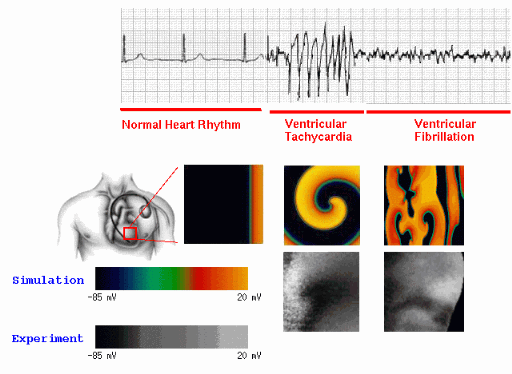
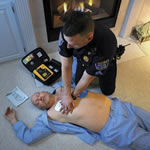 Medical personnel use a strong jolt of electric current applied across the chest of a victim to "jump start" a fibrillating heart into a normal beating pattern - but if applied to someone who's heart is beating normally it could kill him!. Once the shock current is halted, a "frozen" heart has a better chance of regaining a normal beat pattern than a fibrillating heart. This is why"defibrillating" equipment used by emergency medics. The jolt of current supplied by the defibrillator unit is DC, which halts fibrillation and gives the heart a chance to recover - by momentarily stopping it.
Medical personnel use a strong jolt of electric current applied across the chest of a victim to "jump start" a fibrillating heart into a normal beating pattern - but if applied to someone who's heart is beating normally it could kill him!. Once the shock current is halted, a "frozen" heart has a better chance of regaining a normal beat pattern than a fibrillating heart. This is why"defibrillating" equipment used by emergency medics. The jolt of current supplied by the defibrillator unit is DC, which halts fibrillation and gives the heart a chance to recover - by momentarily stopping it. 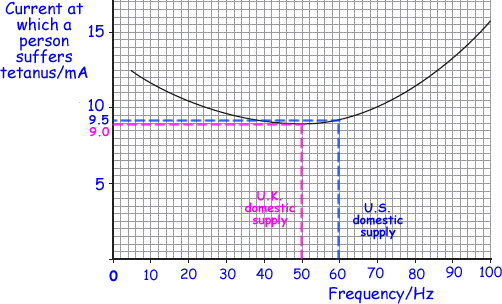 How AC affects the body depends on frequency.
How AC affects the body depends on frequency. 


